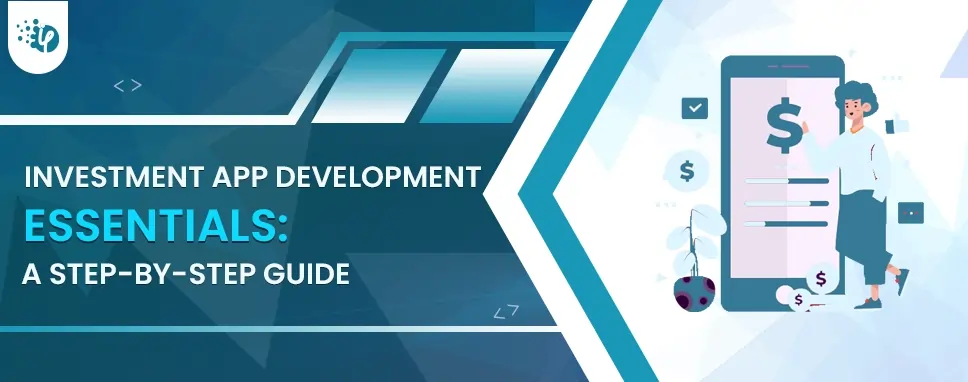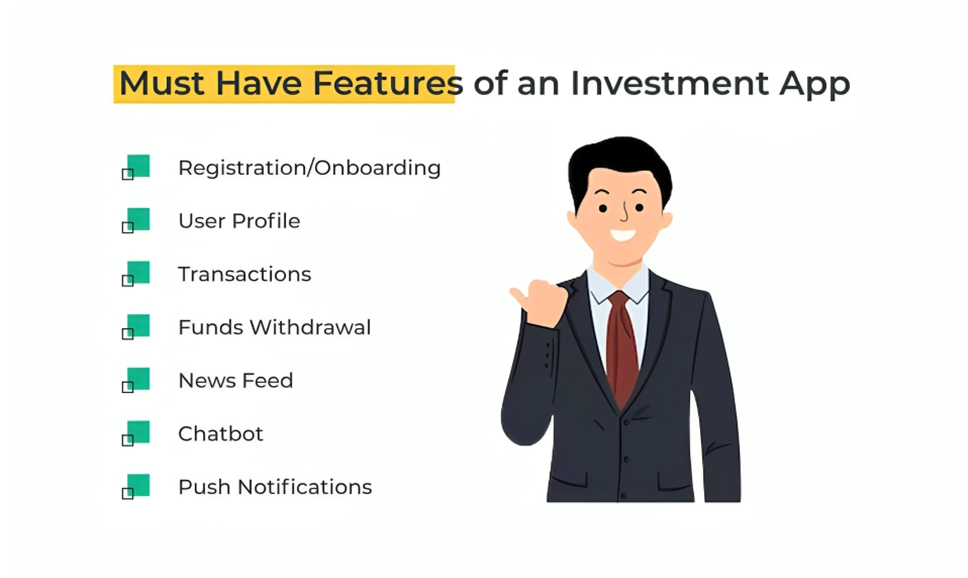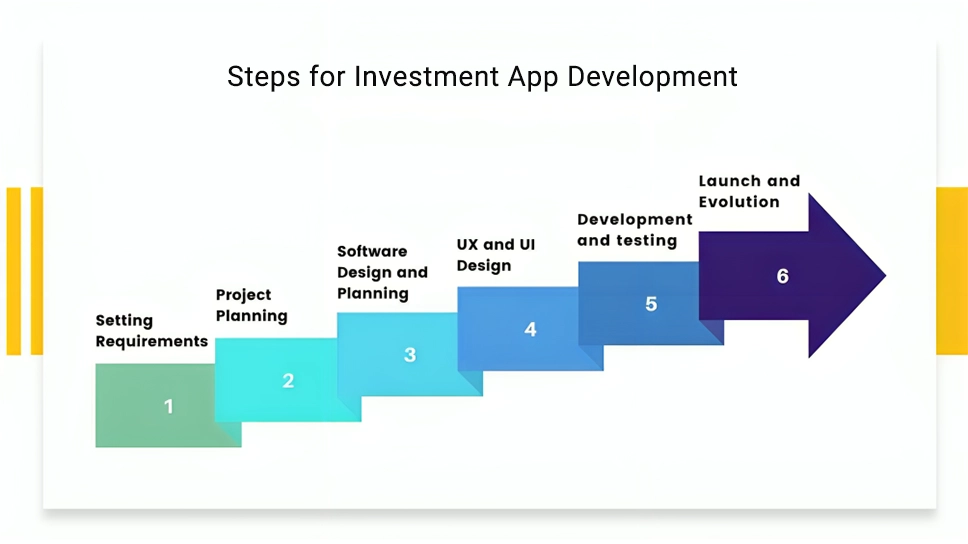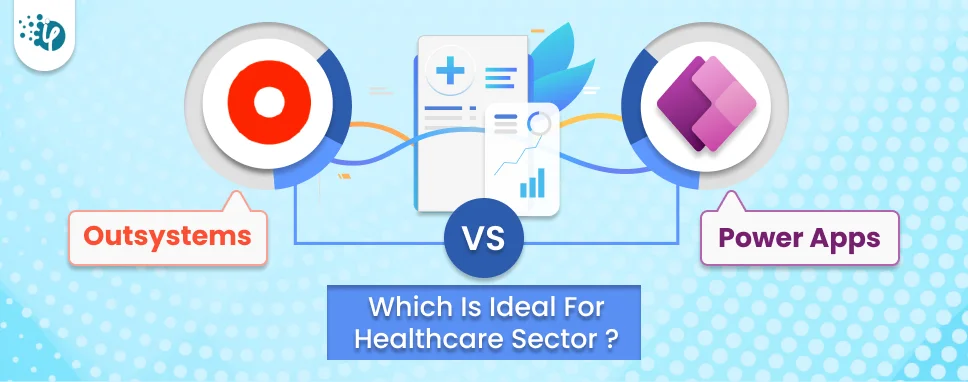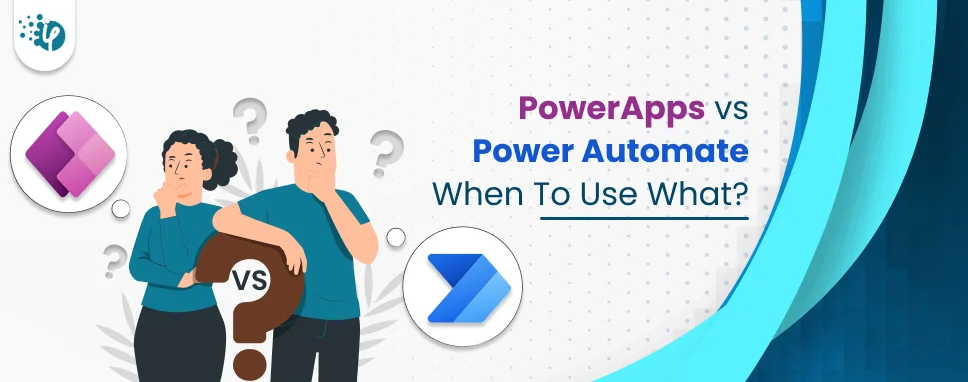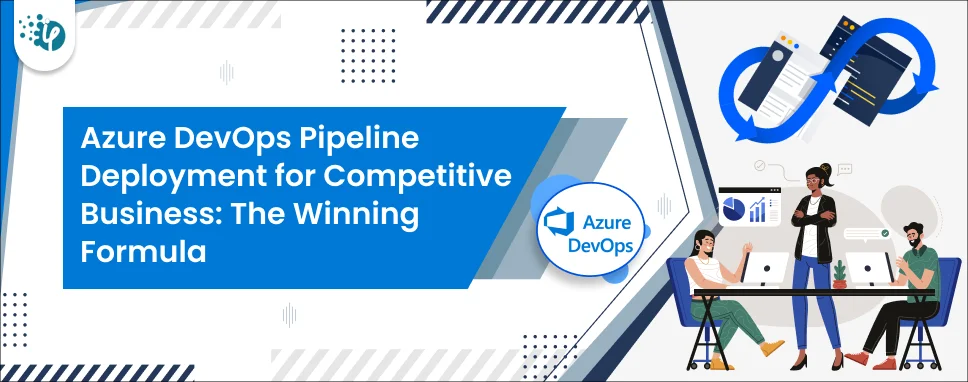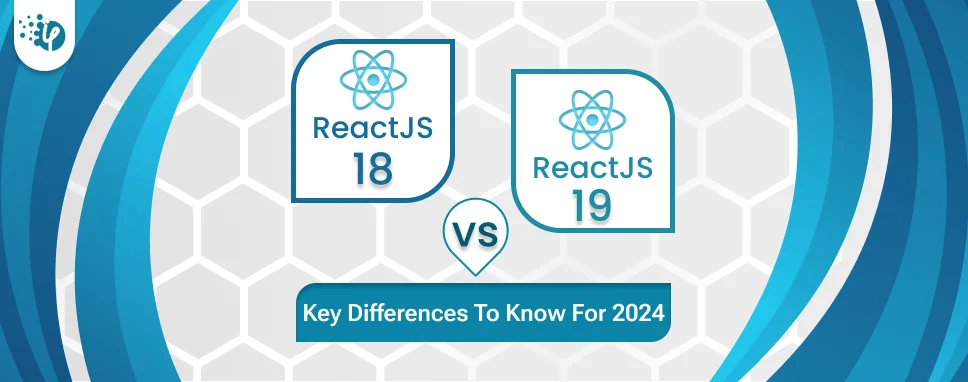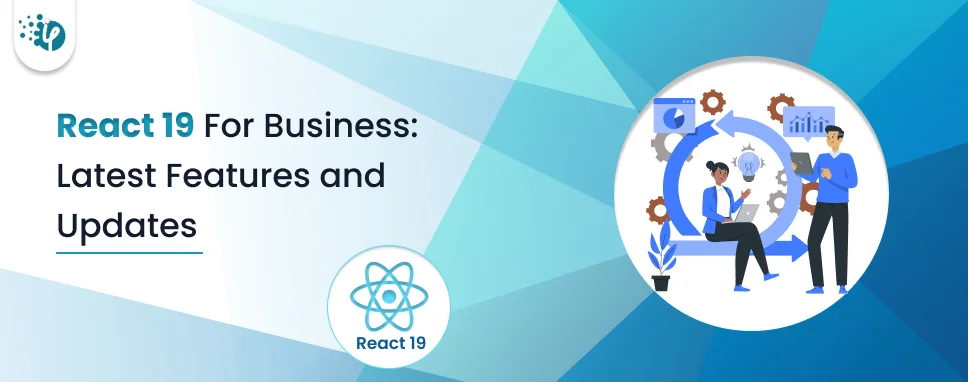Have you ever wondered how 85% of businesses today are missing significant market opportunities by not investing in custom mobile app development? It is surprising that despite an ocean of opportunities, many businesses are still failing to get leads. This is where investment in app development comes into play, particularly for financial businesses.
People are becoming more conscious of the stock market these days, and investing through apps has become a popular trend. This creates a remarkable business opportunity, especially for financial software companies. By providing users with up-to-date information at their fingertips, businesses can tap into this trend and create a surge in lead generation.
In this blog, we will discover how businesses are harnessing this strategic move not only to keep their heads above water but to flourish in today's digitally-infused landscape.
What is an Investment App?
An investment app is a user-friendly application that simplifies the process of investing money in various financial opportunities, all from your smartphone or tablet. These apps provide real-time market data, portfolio management, and trading capabilities, making investing accessible to everyone.
Whether you're a novice or an experienced trader, there's an investment app designed to meet your needs. These apps democratize finance, allowing anyone to participate in the world of investing without the need for a personal financial advisor. They also offer automation features like robo-advisors, making investing smarter and more accessible for achieving financial goals.
Outshine competitors with expert Angular development services.
Why Investing App Development?
Gone are the days of lengthy paperwork and complicated transactions that put off potential investors. Modern investors desire simplicity, instant access, and informed decision-making. This shift in demand has fueled the need for investing apps that cater to both novice and seasoned investors.
These apps provide a unified platform for users to manage their portfolios, track market trends, and execute trades at their fingertips.
Read More: Guidelines for android application design
How to proceed with investment app development?
The success of any Financial application development is determined by how well you cover the needs of users in the app.
Market Research and Analysis
Before boarding on the journey of investing in app development, thorough market research and analysis are paramount. First -
- Identify your target audience.
- Understand their preferences.
- Analyze competitors.
Covering all these offerings lays the foundation for a successful app. A comprehensive study helps in learning the gaps in the market and allows you to shape your app's unique selling points (USPs) that resonate with users seeking a streamlined investing experience.
Planning to hire dedicated ReactJS developers?
Defining App Features and Functionalities
As you delve deeper into the investing app development process, the architecture of your app takes center stage. This is where your imagination intersects with user needs. Defining the features and functionalities of your app involves mapping out the core components that will make investing not just efficient but engaging. Real-time market data integration, intuitive navigation, customizable watchlists, and interactive portfolio management are all essential elements that contribute to creating a captivating investing journey.
Choosing the Right Technology Stack
Behind every seamless app lies a robust technology stack. The choice between native and cross-platform development, the selection of programming languages, and the integration of APIs play a pivotal role in shaping the performance and scalability of your investing app. Striking the right balance between user experience and technical feasibility is key, ensuring your app is not only user-friendly but also operates seamlessly across different devices.
In this evolving landscape, the journey of investing app development unfurls, promising innovation and empowerment. As we dive deeper into the subsequent sections, we will unravel the intricate steps that propel your vision from ideation to a tangible, user-centric investing solution.
What are the types of Investment Apps?
Investment apps come in various types, each catering to different investment styles and preferences. Here's a brief explanation of the common types:
1. Stock Trading Apps: These apps focus on buying and selling individual stocks. They often offer real-time stock quotes, charts, and news to help users make informed decisions.
Examples: Robinhood and E*TRADE.
2. Robo-Advisors: Robo-advisors use algorithms to create and manage a diversified investment portfolio for users based on their financial goals and risk tolerance. They are ideal for hands-off investors who prefer automated investment management.
Examples: Betterment and Wealthfront.
Embrace innovation and agility with the best DOT NET development company
3. Micro-Investing Apps: Micro-investing apps enable users to invest small amounts of money, often by rounding up everyday purchases to the nearest dollar and investing the spare change. This approach makes investing accessible to those with limited funds.
Examples: Acorns and Stash.
4. ETF and Mutual Fund Apps: These apps allow users to invest in Exchange-Traded Funds (ETFs) or mutual funds, which provide diversification across multiple assets. They are suitable for investors looking for a diversified portfolio without the need for stock picking.
Examples: Vanguard and Fidelity.
5. Cryptocurrency Apps: Cryptocurrency investment apps focus on buying, selling, and holding cryptocurrencies like Bitcoin and Ethereum. They provide access to the volatile world of digital currencies.
Examples: Coinbase and Binance.
6. Real Estate Investment Apps: Real estate investment apps enable users to invest in real estate properties or Real Estate Investment Trusts (REITs) with relatively small amounts of money. They are an alternative to traditional real estate investments.
Examples: Fundrise and Roofstock.
7. Educational Apps: These apps are designed to educate users about investing and financial literacy. They provide articles, videos, and tools to help users understand the basics of investing.
Examples: Investopedia and Stockpile.
8. Social Trading Apps: Social trading apps combine investment with social networking. Users can follow experienced traders, mimic their trades, and engage with a community of investors.
Examples: eToro and ZuluTrade.
9. Retirement Planning Apps: These apps help users plan for their retirement by calculating how much they need to save, suggesting investment strategies, and providing retirement account management.
Examples: Personal Capital and Blooom.
10. Fractional Share Apps: Fractional share apps allow users to buy a fraction of a stock or ETF, making it affordable to invest in high-priced assets like Amazon or Google.
Examples: SoFi Invest and Public.
Drive your business to success with the mastery of Java Development Company
How to build an Investment application for business?
To achieve success, make sure that your investment platform's development procedure follows the guidelines listed below. Check out this checklist in advance and develop a creative plan that supports it:
#1 Market Research: Observe the investment market and identify trends, opportunities, and user demands.
#2 Idea Validation: Check out if the founder's idea is feasible and profitable.
#3 Technical Description: Document the app's technical requirements, features, and functionality.
#4 UX Wireframe: Produce a visual blueprint of the investment app's UI and interactions.
Read More: Is java still in demand in 2023
#5 Prototype: Proceed with developing a basic, interactive model to test the app's core functionalities.
#6 MVP (Minimum Viable Product): Develop a streamlined version of the app with essential features to gather user feedback.
#7 User-focused product: Expand the app based on user feedback and market demands.
#8 Launch and Support: Release the fully developed app to the market and provide ongoing support and updates.
A Step-by-Step Guide for Investment Application Development
Undoubtedly, the list above is too short to serve as a practical strategy. We will therefore provide a more thorough explanation of the stages.
Phase of discovery
Between the founders' concept investment product and its technological realization is the discovery period.
Every member of the development team benefits from being able to comprehend the founder's vision and establish a workable plan to transform a concept from ideation to a real app.
Most phases of discovery adhere to this checklist:
- Identify the founding purpose!.
- Make a business analysis.
- Set the necessary technical requirements.
- Make a thorough market analysis
- Set priorities and timelines.
- For your application, create a prototype.
- Revise the prototype's adherence to legal requirements
Wave goodbye to tedious tasks with Excel Addin development services.
This is a very quick outline of the procedures. Let's talk more about this.
Step - 1: Recognize the Founder's point of view
Meetings with the founder on a regular basis will help the project manager and business analyst of the team understand the concept of the company. The other team members should be informed of the meeting minutes.
Step - 2: Produce an action plan
You require a thorough plan that outlines your business strategy as well as the technical specifications that your live app must meet.
The project manager, business analyst, and CTO will be primarily responsible for carrying out the majority of the work at this point. The template for additional technical activities is the actionable plan.
Step - 3: Do a comprehensive analysis of your target market
Learn how the market will respond when your product is released. Hold briefings with stakeholders and obtain the following information:
- What market needs and pain areas would this solution address?
- How does the target demographic look?
- What type of marketing approach is the most successful?
- What are your rivals up to?
The goal is to ask enough questions so that each team member is aware of the target market's expectations and how your product affects them.
Step - 4: Possess a project outline.
The project manager will work with the business analyst to develop a project blueprint based on the knowledge they have gathered thus far. The team members can use this paper as a reference.
Project roles, deliverables milestones, functionality, tech stacks, and an estimated budget for each milestone are all included.
After completing this crucial phase, you ought to have a well-documented plan for developing a product that appeals to your target market, be aware of the advantages and disadvantages of your rivals, and possess a UX wireframe and/or prototype of your software.
Hire .NET core developers to turn your vision into reality.
Step - 5: The Planning stage
The design phase is one of the core development process's most important initial steps. This is because it provides the earliest visual representation of the founder's concept and enables team members to make further contributions that are consistent with the startup's objectives.
Every clickable icon and functionality detailed in the deliverables are independently created by the developer. The design serves as the framework for the coding process, assisting programmers in organizing functionalities in accordance with the project's blueprint.
Deliverables from the design phase include user interface designs for Android and iOS apps and a UX wireframe. A designer can also produce a prototype-a clickable design that functions like a genuine app-without any underlying code or data.
The most effective technique to create an investing application that adheres to your original concept is through prototyping; a team will have access to a practical illustration of how features must operate.
Deliverables from the UI/UX designer should only be allowed when it has been determined that the target audience would find them to be aesthetically pleasing enough. It should also enhance the responsiveness, usefulness, and efficiency of the product.
Step - 6: The phase of development and testing
The most challenging stage of creating any online investment product is the developing and testing phase. As your software development business will oversee the procedure, you shouldn't worry about the specifics at this time.
Under the direction of a CTO, the team will use authorized tech stacks and coding structures to implement the design phase's deliverables.
At the conclusion of this phase, you ought to have either an MVP app or a fully scaled, feature-rich app.
Development of Investment Apps requires a team as under:
The diversity of your development team and their tech stacks has a significant impact on the quality of your application. Professionals that play a critical role in app development include programmers, Project managers, Mobile developers, Backend developers, CTOs, UI/UX designers, QA testers, and DevOps engineers.
Conclusion
In conclusion, this step-by-step guide has shed light on the essential aspects of investment application development. From market research to scaling up, each stage plays a crucial role in crafting a successful investment application. By following these guidelines, you can effectively move on your journey to create a user-focused, secure, and profitable investment app.
Remember these fundamentals and practices when followed correctly can make your business venture rewarding and transformative.
Stay committed and updated with industry trends and market demands to thrive in the competitive digital landscape.













